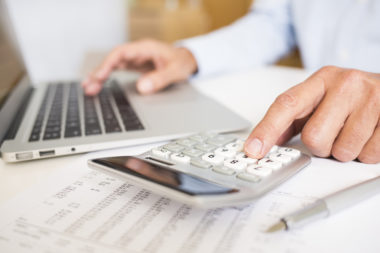The debt-to-assets ratio offers a scope of financial solvency. You can analyze your total debt-to-assets ratio as an individual, investor, or company manager by dividing your total liabilities and debts by your total assets.
Assets include property, resources, or possessions that hold financial worth. Assets can be debts, but not all debts may be assets. A house or building that has accrued equity but is still under loan is both an asset and a debt. However, a property that has unpaid or outstanding debts where it is no longer profitable at sale is no longer an asset — it’s a liability.
Liabilities and debts are closely related, but differ in the status of payout, return, or interest. A liability is a financial obligation or a contract that must be satisfied, such as accounts payable, worker wages, or a debt reaching its due date. Debt is borrowed money to make a purchase that must be paid back: loans, mortgages, and credit.
Similarly, all debts can be considered liabilities, but not all liabilities may be considered debts. A company could be liable for a year’s worth of recurring services purchased at one time from a customer vs. using a loan from a lender to purchase property or equipment.
Building a good debt-to-asset ratio will encourage lenders to offer financing when needed and help you accomplish long-term goals, make purchases, and balance your finances.
Table of Contents
What Is the Debt-to-Assets Ratio?
To measure debt-to-asset ratios, the total amount of liabilities are divided by the total amount of assets.
Consider a rental company that has three properties, each valued at $50,000. The company wholly owns two properties but still owes $25,000 on the loan of the third property. The total-debt-to-total asset-ratio would look as follows:
Total liabilities ($25,000) / total assets ($125,000) = total-debt-to-total assets (1:2, 0.2, or 20%)
| Total debt/liabilities* | 25,000 |
| Total assets | 125,000 |
| Total debt-to-assets | 1:2, 0.2 or 20%. |
*Total debt includes both short-term and long-term debt.
The percent represents the amount of financial leverage, or the debt used to purchase assets. For this example, 20% of the rental company’s assets are financed by creditors, while 80% of the assets are owned. Simply put, a debt-to-equity ratio is the amount of assets owned outright versus the amount of assets that are still liable debt. In practice, it would mean that, for every dollar the rental company made in equity of the assets, it still owes 20 cents in leverage.
While debt-to-assets ratios show the scale of owned assets to owed debt, a deeper understanding of a financial situation may be gained by looking at debt-to-equity ratios.
Debt-to-equity ratios are based on a complete sample of all the finances available to an individual, business owner, or stakeholder. For a company, this means taking a close look at the balance sheets to assess equity or the share capital and retained earnings that may not be considered a debt or equity in the traditional sense. The debt-to-equity ratio gages debt relative to the value of total net assets, including but not limited to: earnings and losses, intangible assets, or pension plans.
For a company, the formula may look as such:
- Debt / equity = total liabilities / total shareholders’ equity.
While the shareholder equity must equal the sum of assets minus liabilities:
- Assets = liabilities + shareholder equity.
The debt-to-equity ratio formula may also be applied to personal finances. In this formula, the shareholder equity transitions to personal assets in relation to the total value of debt and liabilities:
- Debt / equity = total personal liabilities / personal assets – liabilities.
For both business and personal finance, a good debt-to-assets ratio, and debt-to-equity ratio is vital to increasing the chance that a lender trust the loan will be repaid. Even in the event of disrupted income, growth of a company, or any other financial challenges that may arise.
What Is a Good Debt-to-Assets Ratio Percentage?
A good debt-to-assets ratio presents a healthy financial picture to creditors that shows smart saving, spending, budgeting, and debt management. Debt-to-asset ratio percentages show growth over a period of time, and how assets have been acquired and maintained. The higher the ratio, the higher the leverage of a company or individual, or, in simple terms, the amount of debt and liability versus wholly owned assets. A company or individual that has high leverage is seen as more of a risk to a lender than that of lower leverage.
Experts generally describe ratios as follows:
- Highly leveraged
- Over a 1:1 ratio — More liabilities and debts than assets. If something occurred that forced assets to be sold or liquidated, there would not be enough finances to cover the debts.
- High risk
- 1:1 — There is an equal amount of debt and liability to assets.
- Less risk
- Less than 1 — The company owns less liability or debt than assets.
The safest debt-to-asset ratio is less than 50%. If something in the market were to change, assets could be sold to pay off the total debt. However, the value of the ratio is also dependent upon what the lender requires, and what type of loan is being sought. The debt-to-asset ratio should be assessed on a regular basis to ensure that it reflects growth and changes made to the financial portfolio.
Learning about credit and creating a good credit score and report will also encourage a healthy financial picture to continue developing, and expanding financial portfolios to meet long-term goals.
Debt Ratio Formula
Total liabilities / total assets = total debt-to-total assets.
Debt-to-Equity Formula
Business:
Debt / equity = total liabilities / total shareholders’ equity.
- While the shareholder equity must equal the sum of assets minus liabilities:
- Assets = liabilities + shareholder equity.
Personal:
Debt / equity = total personal liabilities / personal assets – liabilities.
Image Source: https://depositphotos.com/





